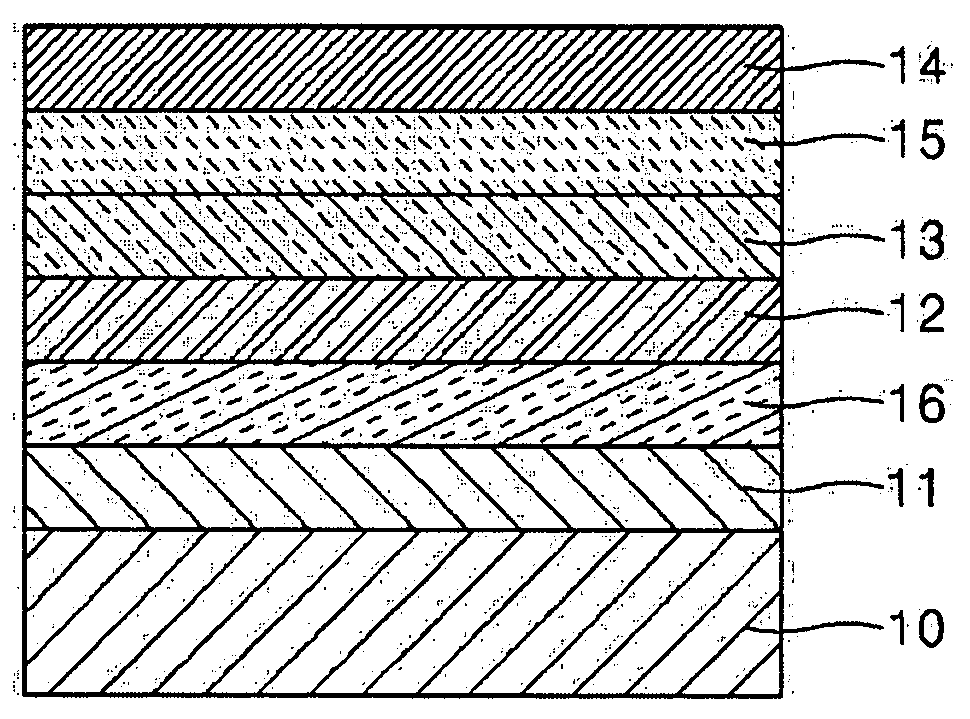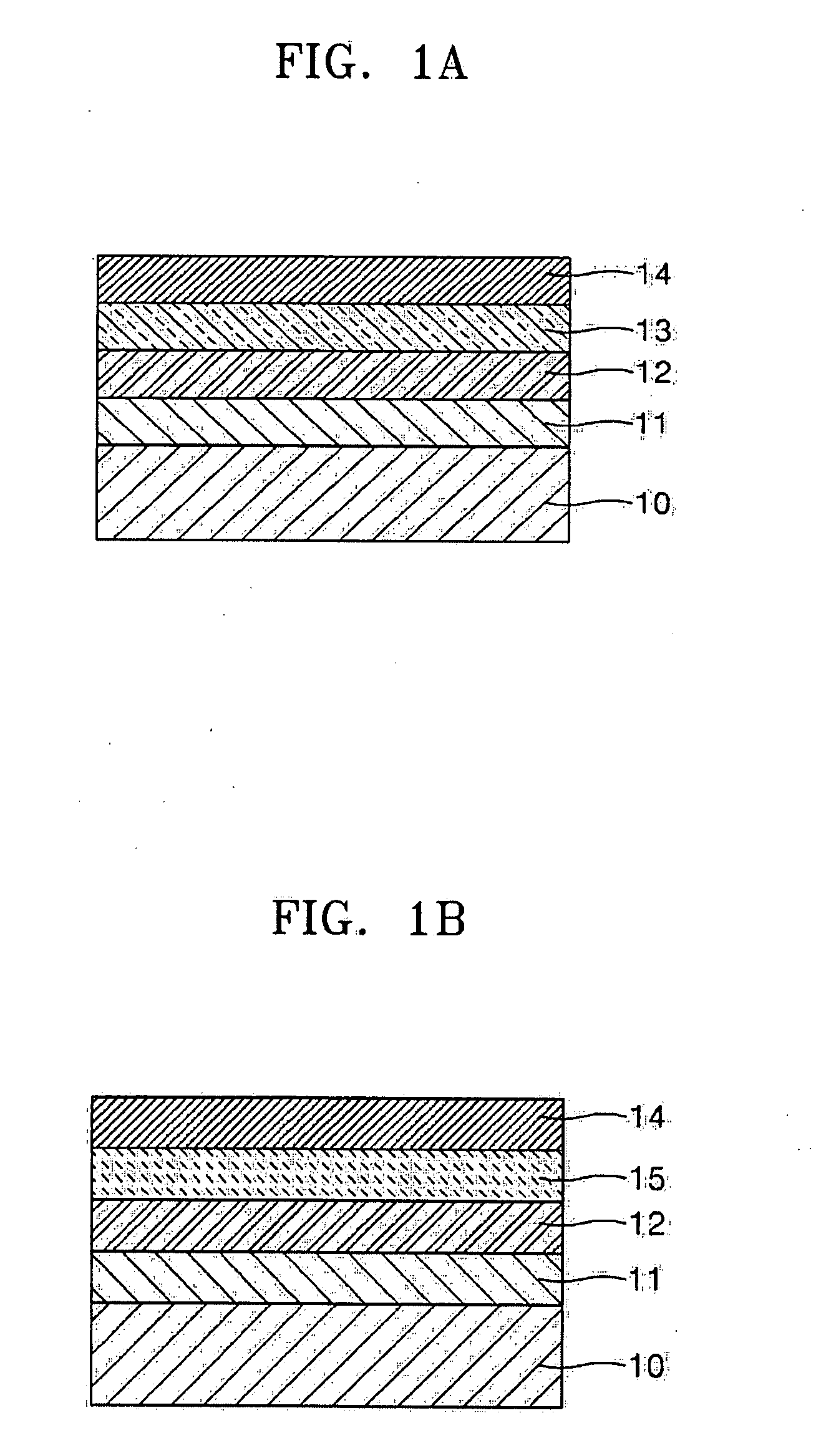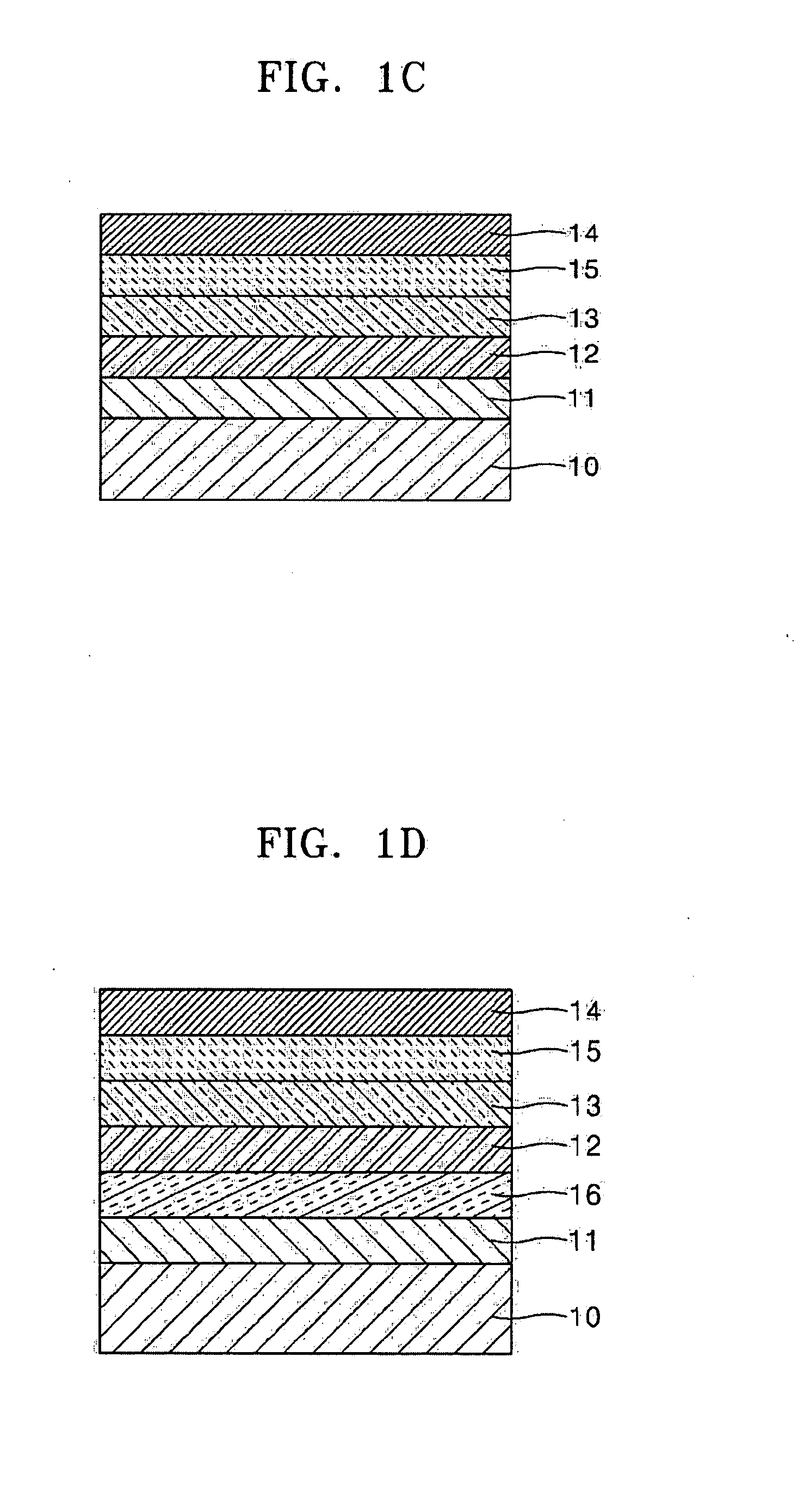Organic light emitting device
a light-emitting device and organic technology, applied in the direction of discharge tube/lamp details, discharge tube luminescent screens, discharge tubes/lamp details, etc., can solve the problems of difficult hole injection, difficult hole injection, and large energy barrier, so as to optimize the charge balance and improve the efficiency of the present invention. the effect of life tim
- Summary
- Abstract
- Description
- Claims
- Application Information
AI Technical Summary
Benefits of technology
Problems solved by technology
Method used
Image
Examples
manufacturing example 1
Polyaniline (PANI) Conducting Polymer Composition
[0144]Polystyrenesulfonic acid-graft-polyanyline (PSSA-g-PANI) was polymerized as a self-doping conducting material using a known synthesizing method by [W. J. Bae et al. Chem. Comm., pp 2768-2769, 2003]. In the present embodiment, the weight ratio of the PSSA polymer chain and the grafted PANI chain was 1:0.15. The number-average molecular weight of PSSA-g-PANI was 35,000. The material was melted in water to 1.0 wt %. Then, a perfluorinated ionomer (PFI) that was dispersed to 5 wt % in a solvent with a volume ratio of water to alcohol of 0.45:0.55 was purchased from Aldrich Co. and isopropyl alcohol and 5 wt % PFI were mixed in a 1.0 wt % PSSA-g-PANI solution and used as a material for forming a HIL 11. This sample was called Sample A.
manufacturing example 2
Manufacturing of PEDOT-PSS / PFI Conducting Polymer Composition
[0145]PEDOT-PSS (Model: Baytron P VP AI4083) which is refined to control the content of Na and sulfate to 5 ppm or less from H. C. Starck, which is a subsidiary of Bayer Aktien AG. Then PFI of Formula 14 was dispersed to 5 wt % in water and alcohol was purchased from Aldrich Co.
[0146](where x=1300, y=200, x=1)
[0147]Then a HIL 11 was prepared with to various compositions of each of PEDOT-PSS / PFI. The ratios of the compositions were as listed in Table 1 below.
TABLE 1Sample CodePEDOT / PSS / PFIAI40831 / 6 / 0B1 / 6 / 1.6C1 / 6 / 3.2D1 / 6 / 6.3E1 / 6 / 12.7F1 / 6 / 25.4
example 1
[0151]A 15 Ω / cm2 (150 nm) ITO glass substrate by Corning was cut to a size of 50 mm×50 mm×0.7 mm, washed using supersonic waves for 5 minutes in isopropanol alcohol and pure water, treated with ultraviolet ozone generator for 30 minutes and then used.
[0152]An HIL 11 was formed to a thickness of 50 nm on the ITO glass substrate by spin-coating a PEDOT-PSS / PFI conducting polymer composition solution obtained as from Manufacturing Example 2. NPB was vacuum-deposited on the HIL 11 to form an HTL 16 to a thickness of 30 nm.
[0153]An emitting layer 12 was formed to a thickness of 50 nm using ADN (9,10-di(naphti-2-il)anthracene, available from Lumtec Corp. LT-E403) as an emitting host and using DPAVBi (4,4-bis[4-(di-p-tolylamino)styryl]biphenyl, available from Lumtec Corp., LT-E605) as an emitting dopant. Then an ETL 15 was formed to a thickness of 30 nm on the emitting layer 12 by depositing Alq3 (tris(8-hydroxy-quinolinato)aluminum, available from Lumtec Corp. LT-E401) to manufacture an O...
PUM
| Property | Measurement | Unit |
|---|---|---|
| HOMO level | aaaaa | aaaaa |
| LUMO | aaaaa | aaaaa |
| HOMO | aaaaa | aaaaa |
Abstract
Description
Claims
Application Information
 Login to View More
Login to View More - R&D
- Intellectual Property
- Life Sciences
- Materials
- Tech Scout
- Unparalleled Data Quality
- Higher Quality Content
- 60% Fewer Hallucinations
Browse by: Latest US Patents, China's latest patents, Technical Efficacy Thesaurus, Application Domain, Technology Topic, Popular Technical Reports.
© 2025 PatSnap. All rights reserved.Legal|Privacy policy|Modern Slavery Act Transparency Statement|Sitemap|About US| Contact US: help@patsnap.com



